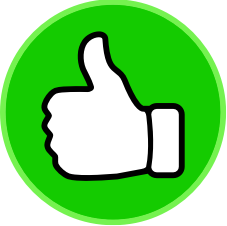Not all water filters are created equal — and if your goal is to get rid of everything from chlorine to lead, bacteria to PFAS, you’ll want to know which systems actually deliver.
Some filters remove a handful of problem contaminants. Others go all-in, reducing hundreds. The real trick is knowing which one works best for your water — and how to tell the difference.
Let’s break down which water filters are the most thorough, which contaminants they’re best at removing, and what to expect from each type.
⚡ Quick Takeaways
- ✅ Reverse Osmosis: Removes up to 99% of contaminants — including heavy metals, nitrates, pesticides, and microbes.
- 🌡️ Distillers: Great for eliminating minerals, metals, and microorganisms — but slow and energy-intensive.
- 🧲 Carbon Filters: Tackle chlorine, VOCs, and bad taste — ideal for municipal water.
- 💡 UV Filters: Don’t remove chemicals, but kill 99.9% of bacteria and viruses.
- 🔄 Ion Exchange: Perfect for removing hardness minerals and reducing heavy metals like lead.
- 🧱 Sediment Filters: First line of defense — removes sand, dirt, and rust, but not chemicals or bacteria.
- 🧠 No single filter removes everything. Many systems use multiple technologies for full-spectrum protection.
🧪 Which Filter Type Targets What? Let’s Break It Down

With so many filtration methods out there, it’s easy to get overwhelmed. This quick comparison table lays out what each filter does and doesn’t remove — so you can match your water problems with the right solution.
| Filtration Method | What It Removes | What It Doesn’t |
|---|---|---|
| 🌀 Mechanical | Dirt, rust, sand, silt | Dissolved solids, metals, chemicals, microbes |
| 🧲 Adsorption (Carbon) | Chlorine, VOCs, pesticides, pharmaceuticals, PFAS | Fluoride, nitrates, bacteria, minerals |
| 💧 Reverse Osmosis | Metals, nitrates, fluoride, microbes, TDS | Hydrogen sulfide, high iron |
| 🧫 Ultrafiltration | Bacteria, parasites, mold, sediment | Viruses, dissolved minerals |
| ⚗️ Oxidation-Reduction (KDF) | Chlorine, iron, hydrogen sulfide, heavy metals | Microbes, most chemicals |
| ☁️ Oxidation-Filtration | Iron, manganese, iron bacteria | Most other contaminants |
| 🔁 Ion Exchange | Calcium, magnesium, some metals | Pathogens, sediment, chemicals |
| 🔦 UV Light | Bacteria, viruses, protozoa | Chemicals, metals, sediment |
🧠 Good to know: Most filtration systems use a combination of these methods to cover as many contaminants as possible — no single filter does it all.
🧪 Comparing Contaminant Removal Methods

Not all filters are created equal. Different filtration methods target different contaminants — and each has its strengths and limitations. Use the table below to compare what each type of filter removes — and what it leaves behind.
| Filtration Method | Removes | Does Not Remove |
|---|---|---|
| Mechanical Filters 🧱 | Dirt, rust, silt, sand | Heavy metals, microbes, chemicals |
| Activated Carbon 🧲 | Chlorine, VOCs, pesticides, microplastics | Fluoride, most heavy metals, dissolved solids |
| Reverse Osmosis 💧 | TDS, lead, fluoride, bacteria, viruses | Hydrogen sulfide, high iron levels |
| Ultrafiltration 🌊 | Bacteria, mold, some parasites | Viruses, dissolved solids |
| KDF (Redox) ⚗️ | Chlorine, heavy metals, hydrogen sulfide | Bacteria, most chemicals |
| Ion Exchange ⚡ | Calcium, magnesium, some lead | Bacteria, VOCs, most chemicals |
| UV Light 🔆 | Bacteria, viruses, protozoa | Chemicals, metals, sediment |
| Oxidation-Filtration 🌪️ | Iron, manganese, iron bacteria | Most other contaminants |
📌 Tip: If your water has multiple types of contaminants (like chlorine, sediment, and lead), a multi-stage system may be your best bet.
🔍 Choosing a Filter Style That Suits Your Home
With dozens of options on the market, it’s easy to get lost in the weeds. But choosing the right filter comes down to lifestyle, space, and what you’re trying to remove. Here’s a side-by-side look at how the most common systems stack up.
| Filter Type | Pros | Cons |
|---|---|---|
| 🏠 Whole-House Systems | Filters every tap, protects plumbing, removes multiple contaminants | Expensive, professional install often required |
| 🚰 Under-Sink Filters | Great for drinking/cooking water, high filtration power, compact | Only treats one tap, some models require a separate faucet |
| 🧃 Countertop Filters | Portable, no plumbing required, great for renters | Uses counter space, slower flow rate |
| 🚿 Shower Filters | Reduces chlorine and heavy metals in shower water | Limited lifespan, may reduce pressure slightly |
| 🧊 Pitcher Filters | Affordable, simple, ideal for casual use | Small capacity, frequent refills needed |
Good to know:
If you’re not sure which system makes the most sense for your needs, check out our roundup of water filter systems — it breaks down whole-house units, countertop models, and everything in between.
🧠 How to Choose the Right Water Filter (Without Overthinking It)

Once you know what’s in your water, picking the right filter becomes a whole lot easier. But with so many systems out there — pitchers, reverse osmosis, whole-house units — it can feel like a maze.
Here’s a quick breakdown to help make sense of it:
- 💧 Target contaminants first. If your water test shows lead, you’ll need more than just a basic pitcher. But if you’re mostly dealing with chlorine and sediment, you’ve got more affordable options.
- 🛠 Match the system to the task. For drinking and cooking, an undersink or countertop system may be all you need. But if you’re tackling issues throughout the house — like iron or hard water — a whole-house filter is the better bet.
- 📊 Balance features with budget. Some filters offer premium perks (like UV sterilization or multi-stage setups), but those come with added costs and maintenance. Decide what’s necessary vs. nice to have.
- ⏲️ Don’t forget upkeep. A top-tier system won’t do much if you forget to replace cartridges. Go with something you can realistically maintain.
✨ Good to know: If you’re curious about how different filter styles compare (from basic pitchers to heavy-duty whole-home setups), check out our full water filter reviews guide for real-world pros and cons.
✅ Final Verdict: So… Which Filter Wins?
If you’re looking for maximum contaminant removal, reverse osmosis systems are tough to beat. They strip out everything from heavy metals to microplastics and drug residue — it’s the same core technology used in many bottled water brands and even some water treatment plants.
But that doesn’t mean RO is the right fit for everyone.
If your water just smells off or has a chlorine taste, a simple carbon filter or pitcher might do the trick. If you’re trying to protect your pipes and appliances, a solid whole-house filtration system may make more sense.
💡 Bottom line: The best water filter is the one that removes the specific contaminants in your water — without draining your budget or sanity. Start with a test, then build from there.
Clean water is never one-size-fits-all — but the peace of mind it brings? That’s universal.
 170 people found this helpful. Was this guide helpful to you?
170 people found this helpful. Was this guide helpful to you? 


